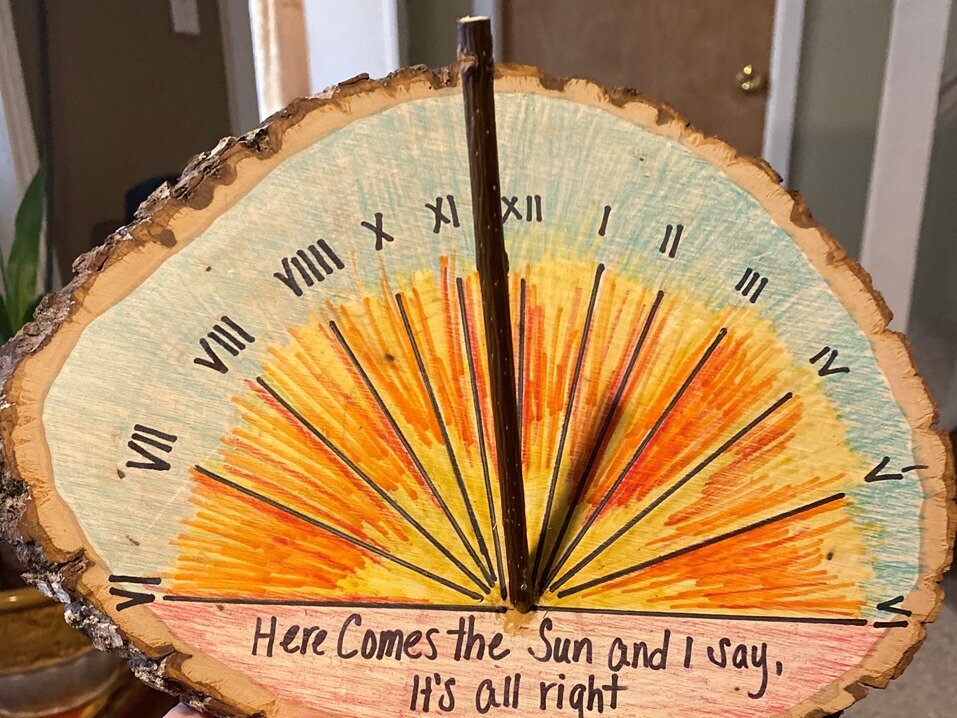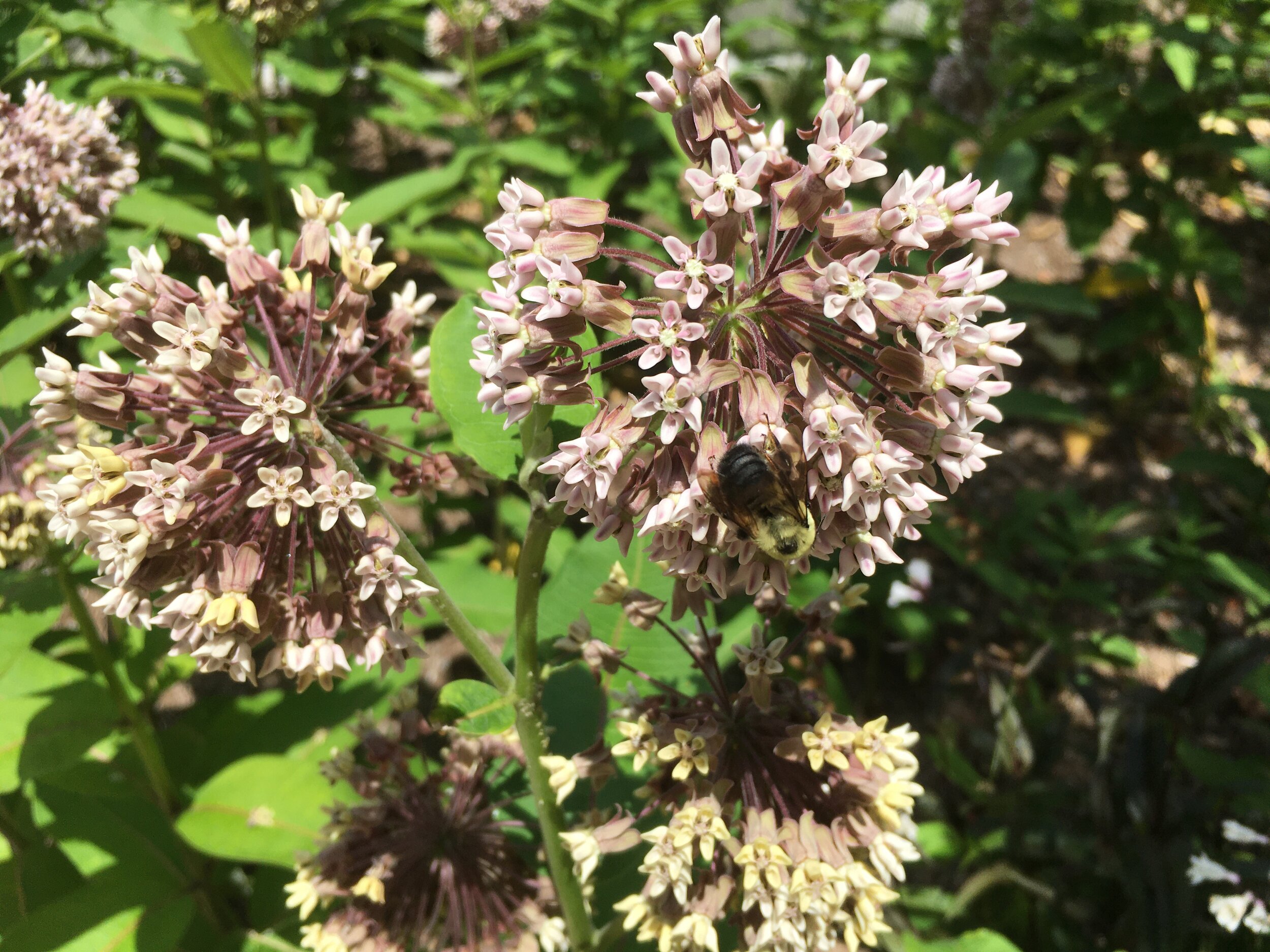By Erik Keller
Instagram: @grohappy_ct
Facebook: facebook.com/grohappyct
Reprinted with permission from Erik’s Blog: http://bit.ly/grohappyct
One of the more favorite classes of my students at Ann’s Place is the making of sundials around the Spring equinox. It is challenging because while clients can be creative in some aspects of this craft, in others they need to have an exacting focus. Today’s class is a bit different as it is via Zoom thus not permitting me to lend a hand when needed.
“I’m glad we have such a great turnout,” I say to the 23 clients who are on-screen. “I would like to know where everyone will be placing their sundial.”
As clients give a variety of answers (the back deck, a garden, a sunny spot, etc.) one response has me a bit worried.
“I’m taking my sundial down to my daughter’s home in Arizona and leaving it there,” says Betty. “It should get lots of sun.”
“Oops, that is going to be a problem,” I reply. “I will tell you why in a bit.”
Finishing introductions, I tell clients that using the sun to tell time has been around for thousands of years and was used until the mid 1800s when railroad companies came up with the idea of standard time zones. “Before this concept took hold, clocks were calibrated around high noon so every town had a different time. . .and because sundials are calibrated around longitude and latitude nearly every sundial you purchase is likely to be incorrect. And that’s why I would advise Betty not to take her sundial down south as it will be very inaccurate.”
“I guess it will stay up here then,” she replies from the chorus of on-screen clients.
To give clients an idea of what they will be making, each one has received a cutout paper sundial specific to the New York area. Soon, each has a workable (though far from waterproof) sundial. “The gnomon (pointer) is set at an angle that is the same as our current latitude. Also as you can see the spacing between the hours on the dial is not uniform. It is wider between 6 and 7 than 11 and 12. That is also a function of latitude.”
Though I can go into much more detail about the geometry of sundials, I decide not to bore my clients as I can see they really want to start building their sundials rather than listen to a lecture.
The process starts by transferring the dial measurement via tracing paper onto the slabs of basswood they all selected.
“This isn’t working for me,” says Lisa.
“You have to press down hard,” I reply.
“Oh, wait a second,” she continues. “The paper is backwards.” A few other clients make the same observation and start over again.
As everyone is head’s down it is difficult to help them directly. I make an attempt by showing them options on my screen for different sizes of wood and templates.
“You can place the template anywhere and after transferring the lines, be as fancy or spartan as you would like,” I say. “Here is how the lines should look.”
A few clients hold their dials up to the screen looking for guidance. They all look fine, but I remind them to leave a little space around the edges so a number, either Roman or Arabic, can be placed near the end of each line.
The next step is a bit more challenging as they all need to nail and glue a stick, the gnomon that will cast a shadow, to the dial’s face. I cut and pre-drilled one for each client, attempting to ease the task.
“The stick I have is not exactly straight,” says June. Others nod their heads in agreement. I reply that I thought that the slight curves on some of the sticks are compensated by the nicer, more rustic look each has. Everyone agrees.
The class time moves quickly and most are not finished with their sundials by the end of our 90 minutes together. I anticipated this.
“You should not feel rushed if you haven’t finished,” I say. “Figure out the type of decorations you want to put on your sundial and then if you want it to go outside, you should put five coats of spar varnish on it.”
“Does it smell?” asks Rose. “Awful,” I reply. “Do it on a day when you can be outside or at least open the windows.”
After reviewing with my clients the way a sundial needs to be set, they wish me and their classmates well and start to pop off the screen. There is a different personal relationship when this happens via Zoom than in class. In certain ways it is more intimate as everyone is literally in your face. After class I send an e-mail to clients asking for photos of their finished sundials. As always, they surprise me with their creativity.















